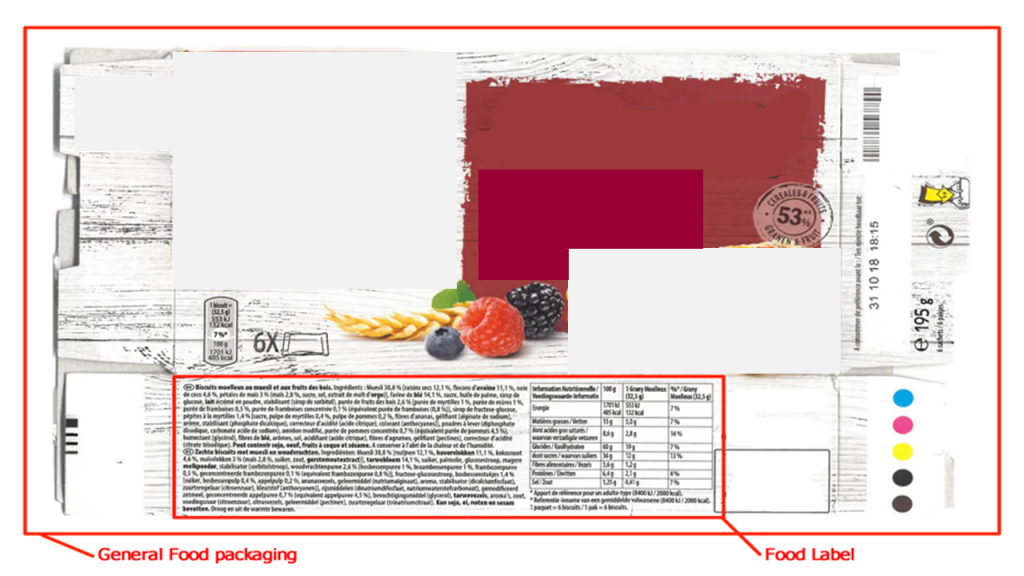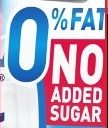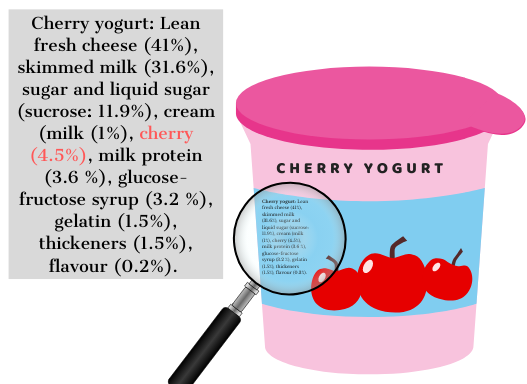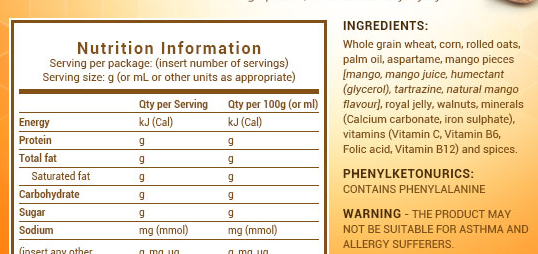Food Packaging & Food Labels
Food packaging and food labels are two different things that you shouldn’t confuse.

Food packaging’s first purpose is to preserve the product from contamination. It also provides information about the product such as its name and brand. Very often, there is an image representing the food product, which can be more or less truthful. It can also include nutritional information as well as visual content.
Food label, on the other hand, is most often displayed on the back or the side of the packaging and includes a list of the product’s ingredients as well as a nutrition table. The latter provides information on the amount of carbohydrates (such as sugar), fat, proteins, etc. contained in the product and the corresponding nutritional values.
What is food packaging?
Producers and suppliers use food packaging to advertise their products in the most appealing way. Marketing strategies exist to make consumers buy a product, sometimes with little to no regard to one’s diet or health. Such strategies include visual merchandising techniques such as the use of nutrition claims.

Some nutrition claims are regulated and allowed by the EU, such as “low fat”, “sugar-free”, “fat-free”, “with no added sugars” (see the Annex of Regulation EC N°1924/2006).
However, be careful when reading those claims: a low level of fat in a “low fat” product doesn’t mean that this product is healthy. Indeed, this product, even if it is “low fat”, could in fact contain a high quantity of salt or sugar!
As many nutrition claims are not yet regulated in the EU such as “healthy”, “natural”, “fresh” or “home-made”, producers can use these claims without any restriction which can lead to consumers being misled. Therefore, you should always be extra careful when you come across those claims on a product and read the product’s label to make sure that it does not contain high amounts of saturated fat, sugar or salt.

Finally, producers can also use misleading images and symbols on the packaging of their products.
For instance, producers are allowed to display illustrations of fruits on food packaging as long as there is but a small percentage of fruits in the actual product. It is common to find products with a packaging displaying images of fruits while they only contain a ridiculous 0,5% fruits!
When a product’s packaging displays fruits, you should not assume that the product is healthy! In fact, the product can contain an insignificant amount of fruits and be high in fat, sugar or salt!
What are food labels?
Regulation (EU) No 1169/2011 on the provision of food information to consumers requires food producers to provide the energy value of a food product as well as its amount of fat, carbohydrates, sugars, proteins and salt.

You can find these information in food labels which are found on the back or the side of food packaging. This regulation thus prevents producers to secretly use ingredients without mentioning them, to protect and inform consumers.
Two important lists are displayed on food labels: the list of ingredients and the list of nutrients.
The list of ingredients
The list of ingredients displays the different constituents a product is made of. The shorter this list is, the more natural the product is and the longer the list is the more processed the product is.
Another important thing to know is that the ingredients list ranks the ingredients in order of predominance: ingredients used in the greatest amount are mentioned first.
So be attentive and try to avoid products where the first ingredients in the list are sugar, high fructose corn syrup or fructose.
Under EU law, producers are also bound to disclose allergens that may be found in their product to inform people with allergies/sensitivities or specific diet. For that purpose, producers have to highlight the ingredients that are allergens: terms in bold, underline, etc.
The list of ingredients may contain natural ingredients (for example, an apple), but also chemical components such as artificial food additives.
Food additives were created to preserve, alter and/or enhance the flavour, texture or colour of a food product. Additives can be harmless but some can be highly processed, industrially produced and hazardous and even potentially carcinogenic.
Thanks to this specific codification, it should be easy for consumers to spot food additives in the ingredient list. Yet, since food producers are allowed to use the corresponding denomination instead of the E-code, spotting food additives is in fact not that easy!
When reading food labels, you come across odd ingredients with unpronounceable names, you should try to favour products that are less processed and contain more natural ingredients.
The list of nutrients
In addition to the list of ingredients, food labels also include a table which aims to give information about the nutritional value of the product to consumers.
This table provides information about the energy value of the product, its amount of sugar, fats, proteins, salt, etc. for a 100 g or ml portion or another specific portion. Thus, this table should help you better understand if the product is actually healthy or not!
For example, always chose a product that contains less sugar per portion of 100 g (or ml) than other similar products. For that purpose, in the nutrition table and more precisely under the section dedicated to carbohydrates, look at the quantities corresponding to the line “of which sugars”.
The same principle can be applied to fats and salt: always try to favour products containing the lowest quantity of salt and saturated fat!
Finally, the nutrient table also provides the Reference Intakes (RI) that are suggested by the European Union as daily intakes for an average adult. However, bear in mind that your daily intakes in sugar, salt and saturated fats should be lower than the provided reference intakes to sustain a healthy diet.
Wanna see how much you have learned about food packaging and labels? Let’s do the quiz here!